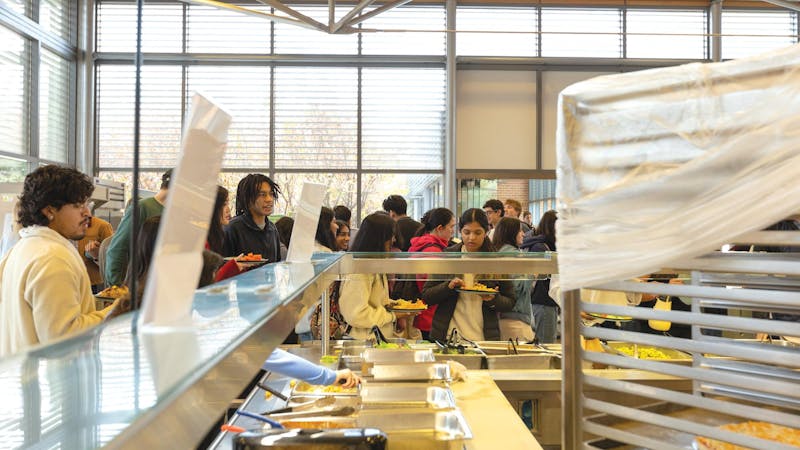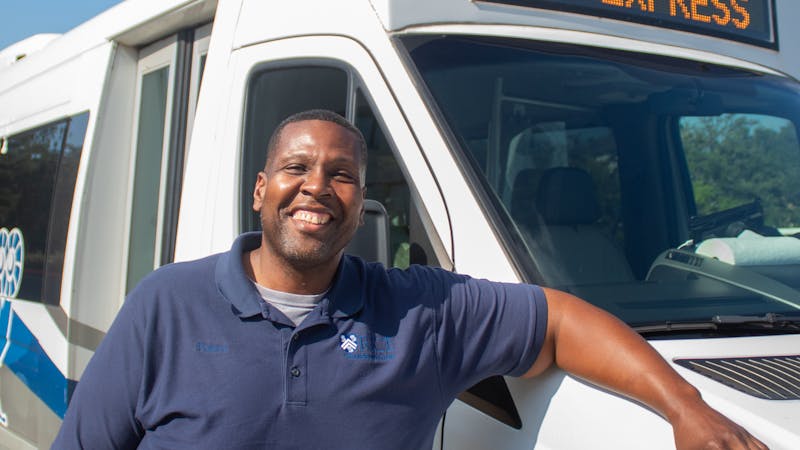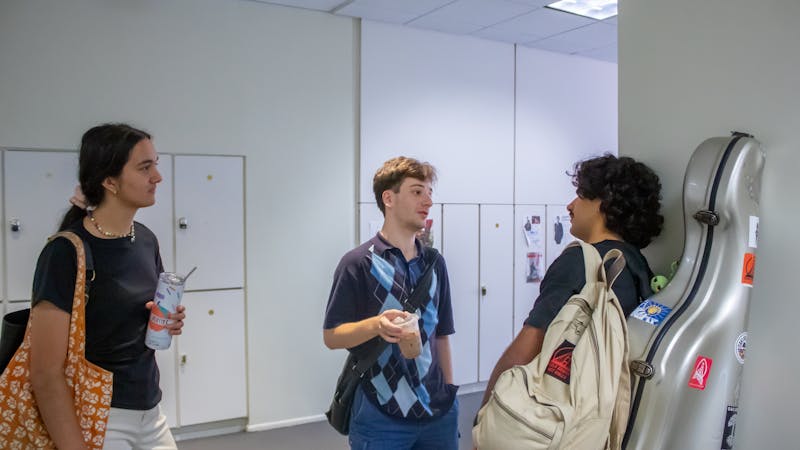Alumna Shannon Walker takes Rice mementos to the International Space Station

Edgar Odell Lovett’s eyeglasses, a stuffed animal, the crests of Rice’s 11 residential colleges and the logo of the Marching Owl Band were all among the objects that NASA astronaut Shannon Walker, Baker College ’87, MS ’92, Ph.D. ’93, brought to space aboard the first fully operational, crewed, commercial spaceflight in history. Walker visited campus on Oct. 12 to commemorate Rice Day, the day Rice University was formally opened in 1912. In an in-person talk, she discussed her recent trip to the International Space Station on the SpaceX CrewOne mission and returned the objects to campus organizations.
David Alexander, the director of the Rice Space Institute, asked Walker questions submitted by students involving various topics, such as Walker’s favorite Rice traditions. Walker said that years before she became an astronaut, she was just a student at Baker College who loved participating in activities ranging from the Marching Owls Band to Beer Bike and Baker 13. Walker said her residential college really helped support her through her time at Rice.
“Baker really helped with a lot of the intangible [needs], the teamwork, being part of a close group, and helping each other and just fostering each other’s successes,” Walker said. “All the colleges do that.”
When asked to give advice for astronaut hopefuls, Walker said challenging oneself academically as a student at Rice is already a step in the right direction. Going beyond academics, NASA looks for people who are resilient team players and have a wide variety of skills and interests, according to Walker.
“Don’t be afraid to have different adventures. The path from point A to point B is definitely not a straight line, and every time you go do something else you’re always incorporating new experiences that can be applicable to being an astronaut,” Walker said.
The CrewOne mission launched in November 2020 and landed in May this year after spending 168 days in orbit. CrewOne is part of NASA’s Commercial Crew Program, a partnership with private aerospace companies to take astronauts to the ISS. Walker said NASA has been focusing on greater space exploration, which includes visiting Mars, rather than regular missions to and from the ISS.
“The significance [of the SpaceX CrewOne mission] is that we were what we called the first [commercial, crewed] operational mission,” Walker said. “So, we were full-fledged going up for the standard 6 months on the space station, taking a crew of four people as opposed to two people, staying much longer than any spacecraft since Skylab had stayed in space, and just using the vehicle operationally.”
In response to a question about the issues that may accompany the commercialization of space flight, Walker said that it is important to remember that the government and private companies have different goals: the government is more concerned with both human and nonhuman greater space exploration while a company’s goal may simply be to mine in space.
“I don’t think we can just have space be a Wild West free-for-all where anybody can claim territory anywhere,” Walker said. “I think we need governments to take a step back and do models based on what we do in Antarctica [which] belongs to everyone.”
Walker presented the different artifacts she had taken to the ISS to their respective campus organizations. These items included the crest of the Graduate Student Association, a spool of carbon nanotube fiber and a picture of Rice alumni astronauts and NASA administrators for display in the Welcome Center. Residential college presidents or their representatives were present to receive their respective college crests.
Brown College President Kennedy Coleman said that each college now has a frame displaying the crest, a photo of it floating in the space station and a certificate of authenticity.
“The ceremony was also really nice … because she was very interesting to listen to,” Coleman, a senior, said. “Brown decided to put the crest in our lobby because it’s a place where a lot of people would be able to see it.”
According to McMurtry College president Rachel Moore, the college has not yet decided where to display the crest, but they are considering McMurtry’s library or the stairwell outside it.
Patricia Reiff, former director of the Rice Space Institute and current professor in the Department of Physics and Astronomy, has known Walker since she was a graduate student. Reiff said that the process of sending something to space is a personal one — the astronauts only have a certain amount of items they can take with them, so the fact that Walker chose to take so many Rice artifacts is significant. Reiff said she also had something special flown to space.
“For me, [Walker] took my ‘outreach mascot,’ [a stuffed animal named] Trigger ... He flew 43 million miles,” Reiff said. “It was strictly done out of the goodness of her heart.”
Alexander said he wants students to learn from and be inspired by Walker’s story.
“Essentially, follow your passions and do the hard work to get you to where you need to be,” Alexander said. “She studied space physics and took [five] attempts to become an astronaut, so it’s something she wanted to do. She didn’t stop and look where she is now. She’s a good role model to follow.”
In his introduction to the talk, President Leebron spoke about the university’s deep ties with space exploration, which trace back to the opening of Rice in 1912. According to Leebron, Lovett would be extraordinarily proud that Walker, NASA’s first native Houstonian astronaut, holds three degrees from Rice.
“President Lovett was, in fact, an astronomer by training who famously declared that he would place ‘no upper limit on Rice’s aspirations,’” Leebron said. “[Walker] has returned to Earth having served as a member of the first fully crewed commercial space flight in history and the commander of the International Space Station.”
More from The Rice Thresher

Over 1,000 students petition against new meal plan
When Konstantin Savvon opened the Housing and Dining email announcing the new unlimited meal plan, he was instantly concerned about the impact on off-campus students like himself.

Rice shuttle bus drivers reflect on changes and connections behind the wheel
Martine Stewart has spent the past year behind the wheel of Rice’s greater loop shuttle, circling the inner campus from the early morning to late afternoon. She said she has come to recognize many of her regular riders – not just their faces, but the exact spots where they wait to be picked up.

Music majors at Rice’s Shepherd School tackle busy schedules, future goals
Cirdan Vonnahme began playing the cello at 4 years old. After winning his first competition at 11 and debuting with an orchestra, he realized he wouldn’t mind playing the cello for life.

Please note All comments are eligible for publication by The Rice Thresher.